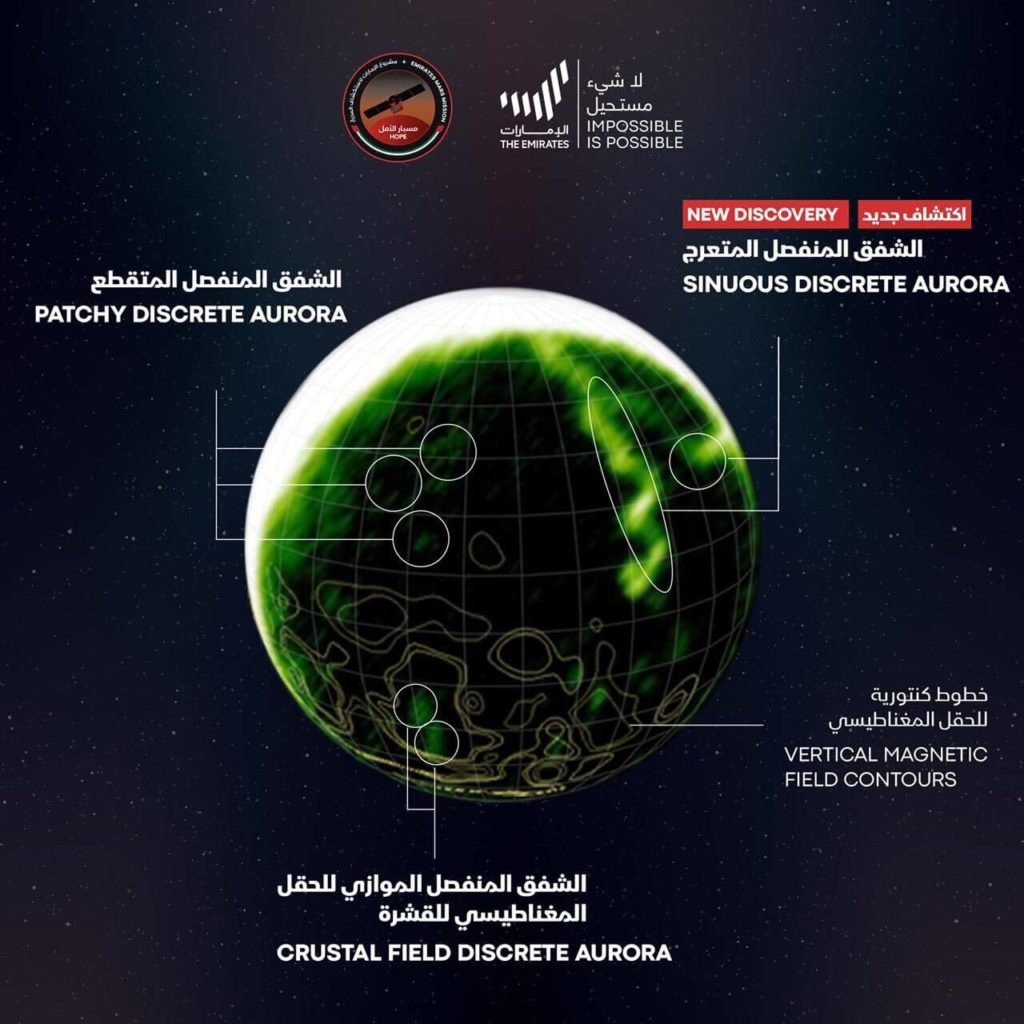Scientists of the Hope mission have recorded a new type of aurora on Mars: a sinuous "wave" of almost
 Image: Hope Mars Mission, Twitter
Image: Hope Mars Mission, Twitter
The pictures were taken with a spectrometer.ultraviolet radiation (EMUS) from a spacecraft during a solar storm. EMUS collects data at a wavelength of 130.4 nm and shows how solar wind electrons affect atoms and molecules in the planet's upper atmosphere. The researchers note that this aurora is one of the brightest and most extensive of all recorded by the mission to Mars in a year of observations.
 Image: Hope Mars Mission, Twitter
Image: Hope Mars Mission, Twitter
Due to the absence of global and the presence of localmagnetic fields on Mars, three types of auroras were previously observed - proton, diffuse and point. The pinpoint aurora is thought to originate above magnetic minerals in the planet's crust. And proton is a consequence of the interaction between the solar wind and hydrogen in the thin atmosphere of the planet.
Researchers attribute the new discovery to diffuse radiance, however, as the scientists themselves note, the nature of this process is not yet fully understood.
We have ideas, but no clear explanation of whatwhy do we observe intense auroras of this form and on a planetary scale. We now have the opportunity to review previous observations of Mars by missions such as Maven and Mars Express to find signatures that could refine Hope's recent observations and perhaps help us try to understand what's going on here.
Rob Lillis, Mission Hope team member at UC Berkeley
Read more:
Inexplicable duality found in elementary particle physics: what will it lead to
Look at the alignment of the planets in 2022: the brightest planets are visible in the photo from Earth
Scientists explain how a stem cell "understands" what it will become